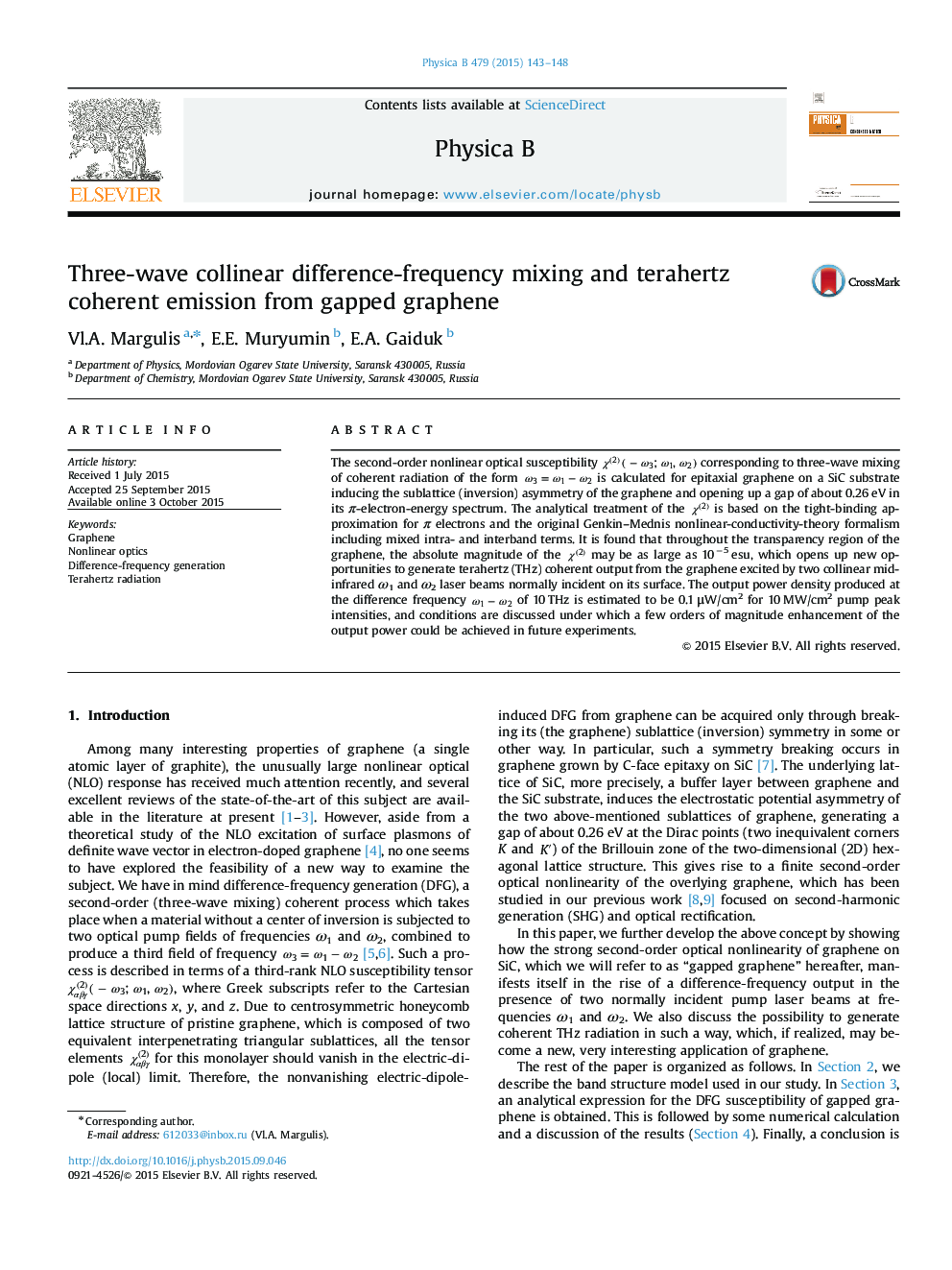| Article ID | Journal | Published Year | Pages | File Type |
|---|---|---|---|---|
| 8162094 | Physica B: Condensed Matter | 2015 | 6 Pages |
Abstract
The second-order nonlinear optical susceptibility Ï(2)(âÏ3;Ï1,Ï2) corresponding to three-wave mixing of coherent radiation of the form Ï3=Ï1âÏ2 is calculated for epitaxial graphene on a SiC substrate inducing the sublattice (inversion) asymmetry of the graphene and opening up a gap of about 0.26 eV in its Ï-electron-energy spectrum. The analytical treatment of the Ï(2) is based on the tight-binding approximation for Ï electrons and the original Genkin-Mednis nonlinear-conductivity-theory formalism including mixed intra- and interband terms. It is found that throughout the transparency region of the graphene, the absolute magnitude of the Ï(2) may be as large as 10â5 esu, which opens up new opportunities to generate terahertz (THz) coherent output from the graphene excited by two collinear mid-infrared Ï1 and Ï2 laser beams normally incident on its surface. The output power density produced at the difference frequency Ï1âÏ2 of 10 THz is estimated to be 0.1 μW/cm2 for 10 MW/cm2 pump peak intensities, and conditions are discussed under which a few orders of magnitude enhancement of the output power could be achieved in future experiments.
Related Topics
Physical Sciences and Engineering
Physics and Astronomy
Condensed Matter Physics
Authors
Vl.A. Margulis, E.E. Muryumin, E.A. Gaiduk,
